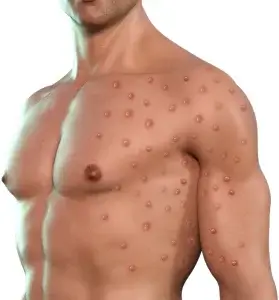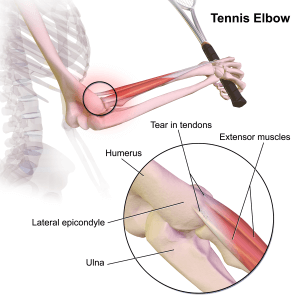概要
Autism spectrum disorder, or ASD, is an umbrella term that entails a group of neurodevelopmental disorders that occur during childhood.
Patients with ASD have a problem with social interaction and communication. Moreover, they often exhibit repetitive stereotypical patterns of behaviour.
According to the Centers for Disease Control and Prevention (CDC), one in every four children was diagnosed with a form of ASD in 2014. The CDC also states that ASD has an obvious predilection for males, with a ratio of 4:1.
This condition is prevalent all around the world regardless of race, region, or environment. However, some regions report more cases than others, and this is also due to the limited ability to accurately diagnose and classify ASD.
Causes and risk factors of autism
The exact causes of autism are still unclear. However, scientists believe that certain risk factors increase the chances to develop this condition.
These factors include:
- 家族の歴史 – having a family member with autism increases the risk of developing this condition in newer generations, which suggests a hidden genetic component of ASD.
- Genetic disorders – conditions such as fragile X syndrome and other genetic conditions.
- Maternal age – getting pregnant near menopause is associated with several diseases, including down syndrome and ASD.
- Low birth weight – while we don’t know the exact pathogenesis behind this, newborns who had low birth weights are more predisposed to develop ASD.
- Metabolic imbalances – fluctuating electrolytes and other metabolic compounds increase the risk of ASD.
- Exposure to harmful substances – when the pregnant mom is exposed to substances, such as heavy metals, environmental toxins, and a drug called valproic acid, ASD becomes more prevalent.
- Idiopathic – for the majority of ASD cases, physicians are unable to identify any clear cause or risk factor that triggers this condition.
The signs and symptoms of autism
According to the Diagnostic and Statistical Manual of Mental Disorders (DSM-V), there are 5 types of autism that present with slightly different signs and symptoms. The most common symptoms can be classified as follow:
Symptoms related to social interaction
- Difficulty sharing emotions
- Difficulty maintaining a reciprocal conversation
- Inability to read body language
- Difficulty maintaining eye contact
Symptoms related to behaviour
- Repetitive pattern movements and phrases
- Strict adherence to certain routines
- Bizarre interests
Diagnosis of autism
The diagnosis of ASD requires screenings, genetic testing, and behavioural evaluations.
Developmental screenings
According to the American Academy of Pediatrics (AAP), all children should undergo screening for ASD at the ages of 18 and 24 months.
Thanks to screenings, doctors may be able to diagnose ASD early on, which improves their outcome.
One of the most common screening tools used by pediatricians is the Modified Checklist for Autism in Toddlers (M-CHAT). In summary, this tool consists of 23 questions answered by the parents. After that, the pediatrician uses the gathered information to evaluate the risk of children.
Note the accuracy of screening tests is not always optimal, and for this reason, additional diagnostic tools are still being researched.
Other screenings and tests
Besides screening, the pediatrician may opt for the following tests:
- DNA testing for genetic diseases
- Behavioral evaluation
- Visual and audio tests to exclude issues that mimic autism
- Occupational therapy screening
After collecting data from all the previous tests, a team of healthcare professionals (e.g., child psychologists, occupational therapists, speech pathologists) will confirm the diagnosis.
Treatment of autism
Unfortunately, there is currently no cure for ASD. However, research is allowing us to reach better clinical outcomes compared to a few decades ago.
Your child’s doctor may recommend the following treatments:
- Behavioral therapy
- 理学療法
- Occupational therapy
- Speech therapy
- Play therapy
Aside from these conventional treatments, the doctor may suggest anxiolytic therapies, such as massages, weighted blankets, and meditation techniques, to help your child relax.
Interestingly, patients respond differently to specific treatments. While some patients would get better after a few sessions of physical and speech therapy, others show no symptom improvement.
Alternative treatments for autism include:
- High-dose vitamins
- Hyperbaric oxygen therapy
- Melatonin to address sleep issues
- Chelation therapy to flush metals from the body
Previous research found conflicting evidence about the effectiveness of alternative treatments for ASD. A consultation with a pediatrician is recommended before trying any of these treatments.
Complications of autism
1. Sensory problems
Sensitivity to sensory input is a common issue with ASD. For instance, you may notice that your child experiences emotional distress when exposed to bright lights or loud noises. On the other hand, some patients may ignore other sensations (e.g., extreme heat, pain).
2. Seizures
Seizures are common among patients with ASD. Generally, patients start having seizures during their childhood or teenage years.
3. Mental health issues
People with ASD are susceptible to depression, anxiety, mood swings, and behavioural abnormalities.
Prevention of autism
While there is no definitive way to prevent ASD, some lifestyle modifications may reduce the risk of this disorder.
これらには以下が含まれます:
- Healthy living – eat balanced meals, exercise regularly, and do not miss your medical checkups. Additionally, ensure that you are getting proper prenatal care and vitamin supplementation.
- Be careful during pregnancy – do not take any pharmacological drugs without asking your doctor.
- Avoid alcohol – avoiding alcohol consumption during pregnancy lowers the risk of several developmental disorders in your baby.
Autism spectrum disorder is a common mental condition that requires complex and challenging medical management. Because autism is mostly idiopathic (without an apparent cause), we cannot do much about it! The best option is to treat this condition promptly, using psychotherapy and psychopharmacology when needed.
Hopefully, in the near future, we will identify the etiology of autism and develop protocols to treat and prevent it.
1-Hodges, H., Fealko, C., & Soares, N. (2020). Autism spectrum disorder: definition, epidemiology, causes, and clinical evaluation. Translational pediatrics, 9(Suppl 1), S55.
2-Gardener, H., Spiegelman, D., & Buka, S. L. (2009). Prenatal risk factors for autism: comprehensive meta-analysis. The British journal of psychiatry, 195(1), 7-14.
3-Wiggins, L. D., Rice, C. E., Barger, B., Soke, G. N., Lee, L. C., Moody, E., … & Levy, S. E. (2019). DSM-5 criteria for autism spectrum disorder maximizes diagnostic sensitivity and specificity in preschool children. Social psychiatry and psychiatric epidemiology, 54(6), 693-701.
4-Lord, C., Elsabbagh, M., Baird, G., & Veenstra-Vanderweele, J. (2018). Autism spectrum disorder. The Lancet, 392(10146), 508-520.
5-Thabtah, F., & Peebles, D. (2019). Early autism screening: a comprehensive review. International journal of environmental research and public health, 16(18), 3502.
6-Shenoy, M. D., Indla, V., & Reddy, H. (2017). Comprehensive management of autism: current evidence. Indian journal of psychological medicine, 39(6), 727-731.
7-Kerns, C. M., Wood, J. J., Kendall, P. C., Renno, P., Crawford, E. A., Mercado, R. J., … & Storch, E. A. (2016). The treatment of anxiety in autism spectrum disorder (TAASD) study: rationale, design and methods. Journal of child and family studies, 25(6), 1889-1902.
8-Cannell, J. J. (2017). Vitamin D and autism, what’s new?. Reviews in Endocrine and Metabolic Disorders, 18(2), 183-193.
9-Xiong, T., Chen, H., Luo, R., & Mu, D. (2016). Hyperbaric oxygen therapy for people with autism spectrum disorder (ASD). Cochrane Database of Systematic Reviews, (10).
10-Rossignol, D. A., & Frye, R. E. (2011). Melatonin in autism spectrum disorders: a systematic review and meta-analysis. Developmental medicine and child neurology, 53(9), 783–792. https://doi.org/10.1111/j.1469-8749.2011.03980.x
11-James, S., Stevenson, S. W., Silove, N., & Williams, K. (2015). Chelation for autism spectrum disorder (ASD). Cochrane Database of Systematic Reviews, (5).
Health Literacy Hub Webサイトで共有されるコンテンツは、情報提供のみを目的として提供されており、州または国の資格のある医療専門家が提供するアドバイス、診断、または治療に代わるものではありません。読者は、他の情報源から提供された情報を確認し、健康に関して質問がある場合は資格のある開業医のアドバイスを求めることをお勧めします。 Health Literacy Hubは、提供された資料の適用から生じる直接的または間接的な結果に対して責任を負いません。



